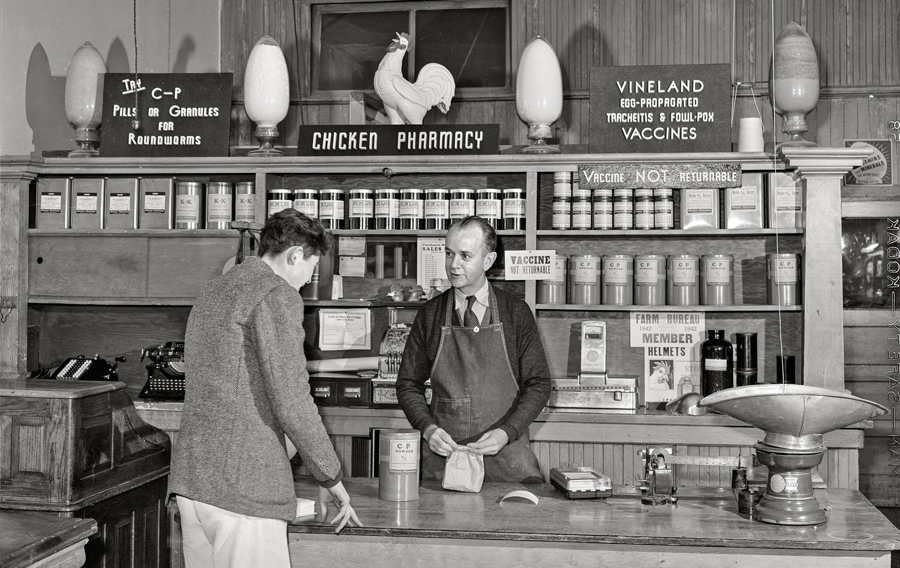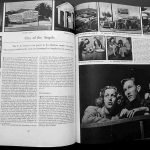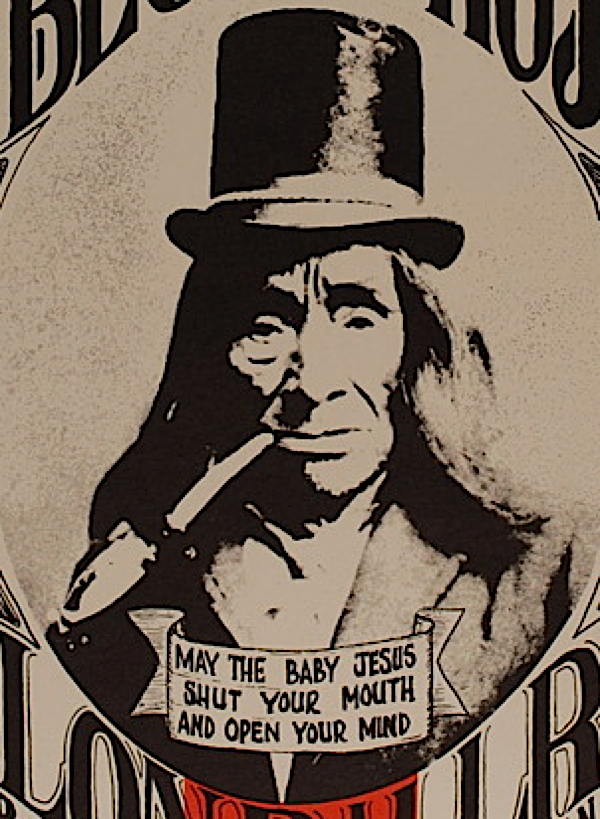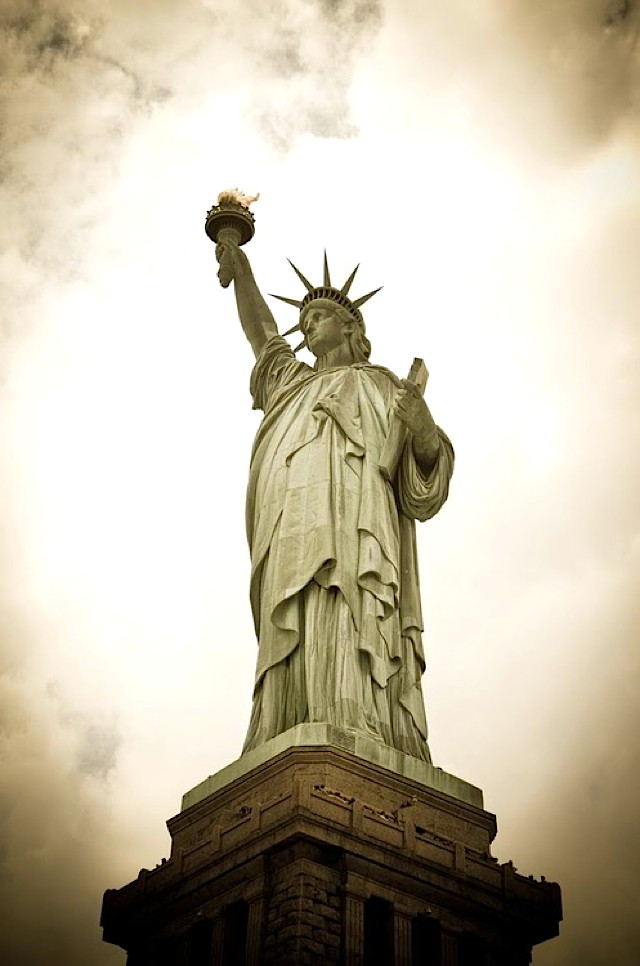The ‘Super Market’: Eat your heart out Hale Adams RECALLS Ghost, I get it — I’m inclined to think that “real” money is gold and silver coin, or at least greenbacks freely exchangeable for gold and silver.
The problem is that the pool of goods and services is (over the long haul) always expanding. If the prices of these goods and services were fixed-in-place over the course of many decades, and if the price of gold and silver was also fixed, we would need vast quantities of gold and silver (perhaps more than is available to mine in the Earth’s crust) to make into coins to serve the economy, to allow the markets to function.
If the limits of precious metals available to us has an upper bound that we’re crowding pretty hard, and if the price per ounce is fixed, then it follows that deflation would set in. That was pretty much what our great-grandparents were experiencing in the late 19th Century — that’s when the arguments for the free coinage of silver were so widespread, and those experiences were what gave Bryan’s “Cross of Gold” speech such power.
One of the lessons our grandparents (mine were born in the 1890s) learned in the 1930s is that a persistent deflation is a recipe for disaster. Look at the CPI in the 1920s and ’30s, and you will see that the general price-level collapsed by about 30 to 40 percent in the space of just three years, from 1930 to 1933. We can argue about the root causes of the Great Depression (my own favorite is the Smoot-Hawley tariff), but the fact is that the money supply shrank drastically — in some places, people were reduced to barter because the was no money to be had.
(My father, born in 1927, could remember farmers in the ’30s coming to my grandfather, who was a small-town doctor, and asking if they could pay a small bill for, say, three dollars, with a dozen bushel baskets of apples, for example. Grandpa would ask Grandma to look at the apples: “Verna, are these apples worth $3 to you?” Dad said that you could see the gears turning in her head as she sized up the apples for her family’s consumption or as trading material, and she would turn to Grandpa and say, “Yes, Amos, those are worth $3.” Grandpa would take the bill for $3 from the farmer, and write “Paid in Full” on the bill.
(Another time, a farmer showed up at Grandpa’s office with a shotgun. “Doc,” said the farmer, “I ain’t got the money to pay this bill for twenty-five bucks. Will you take this shotgun instead?” Grandpa looked the shotgun over, decided it was a nice piece, and wrote “Paid in Full” on the man’s bill.
(There was simply NO MONEY to be had.)
Yes, high inflation (more than, say, 4 or 5 percent a year) sucks. But you have to have a small (0 to 2 percent) rate of inflation if you’re to allow the economy to work, to give it the “wiggle room” to avoid nasty bouts of deflation (again, look at the ’30s). The problem right now is that we have a “ruling class” (or so they imagine themselves to be) who confuse dollars with wealth, and think the more dollars they print, the wealthier the country is. (Some of the “ruling class” aren’t so stupid, of course, they’re just along for the ride in a cynical bid for power.) And so we are in for a rough time of it under Their Fraudulencies, Biden and Harris.
(I’m willing to cut the-powers-that-were in the ’70s some slack — the old men running the show at the Federal Reserve back then were young men in the ’30s, and were likely deathly afraid of a repeat of the catastrophic deflation they had to live through. Unfortunately, they erred too far in the other direction — 15% inflation isn’t very good for economies, either.)
(And I’m sorry, Gerard, for running off at the keyboard, again.)
So, Ghost, I sympathize — there’s something comforting about the heft of a “Walking Liberty” half-dollar or a “Morgan” dollar. But they’re gone, and they’re not coming back. And it’s not because of “theft” — it’s almost a question of physics. There just ain’t enough gold and silver to use as coins at any price-per-ounce that is close to what our parents and grandparents knew.
As usual, my two cents’ worth.
Hale Adams
Pikesville, People’s still-mostly-Democratic Republic of Maryland
Auntie Analogue RECALLS: “In the 1950’s my Mom or Grandma took the pre-teen me by the hand, and walked three blocks to a chicken market on a city side street. In a stack of cages were live chickens whose cacophonic clucking made one hell of a racket. Mom or Grandma chose a chicken and one of the men behind the counter removed it from the cage and, standing behind the counter glass, with an expert blow from a cleaver, beheaded it on a chopping block right in front of us. Before the headless fowl had stopped moving the man wrenched the bird around and around in the maw of a machine whose loudly whirring rotors plucked almost all of the feathers. Then the man deftly gutted the chicken, with his hands scooped out its intestines and other inedible organs which he plopped into a galvanized steel garbage pail (I remember peering into the pail to gaze in wonder at a mass of squirming, seemingly ever-settling chicken guts). Next, the man immersed the carcass, for some long seconds, in a big steaming metal vat of boiling water, then withdrew it and expertly wielded cleaver and knife to dismember to order, dress to order, and wrap the chicken in brown butcher paper.
At home Mom or Grandma manipulated the whole chicken or chicken parts, turning them round and round to find and pluck, or to burn off over the gas range burner flame, the few remaining feathers.
How we survived eating fresh-killed chicken must remain a mystery.
My uncle raised chickens and in front of me, my brother, and my uncle’s own children, with a bird clenched between his knees and the head in his grip, he beheaded it with three or six strokes of a knife, released the headless bird inside his pen’s chicken wire fence and let it run about willy-nilly until it stopped moving. My aunt plucked the chicken, boiled it for a few minutes to kill surface bacteria, then prepared it for roasting or frying, or for potting to make chicken soup.
And my Grandma’s chicken soup, made with freshly killed chicken, was the best and, in my experience, remains unequaled.



![That Was the Whopper Weekend That Was [Illustrated] welcometohell](https://americandigest.org/wp/wp-content/uploads/2021/05/welcometohell-150x150.jpg)
![Allen Ginsberg: The Interview, <strong> ➡ 1972 ⬅ </strong> [Republished by unpopular demand] ginsbergnirvana](https://americandigest.org/wp/wp-content/uploads/2022/05/ginsbergnirvana-150x150.jpg)




 Gerard Van der Leun
Gerard Van der Leun
























Comments on this entry are closed.
The preacher was coming to eat with them after church and Mel’s mother told Mel to go down the road to their neighbor’s house and get her two chickens.
She said now don’t get thin ones.
Mel said, Momma, I know how to do it.
So he went to the neighbor’s house and picked up two nice chickens and put them in a tow-sack.
On the way home, he cut across the pasture and ran into his cousin TT. TT said, Melvin, what you got in that sack.
Mel said I got me some chickens.
TT said if I guess how many you got in there, will you give one.
Mel said, if you can guess how many’s in here I’ll give you both of them.
TT said six
Mel Tillis
Rimshot!
An excellent point by Hale Adams that the 1930’s U.S. depression was actually a deflationary spiral. A completely different beast than inflation.
I take issue with this statement he made, though “….it’s almost a question of physics. There just ain’t enough gold and silver to use as coins at any price-per-ounce that is close to what our parents and grandparents knew.
This is simply not true. Modern mining is extracting it at unprecedented rates per capita.
And the current price-per-ounce is a couple of decimal places more than it was then. Gold – and especially silver – coins are still Real Money. You should acquire some
Quite agree B’Guy. Silver rounds, one troy ounce pure silver, look just like silver dollars, but aren’t, can be bought on line from mints such as J M Bullion and shipped to you via US Mail.
-or you want gold? Goldbacks, legal tender in Utah, Nevada, New Hampshire, bills made of 1/1000th of a troy ounce gold leaf encased in plastic.
my mother spun many yarns, one had to consider the source. a yarn then, warily-
rural north carolina, the depression. a man and his family pull in the drive and asks can they sleep in the barn for the night, her mother made up the front room for them. they have supper, too. very early in the morning her father went to his brother-in-law’s house and borrowed five dollars to give to the travelers. his brother-in-law was a moonshiner and one of the few in the county with cash on hand. at the same hour my grandmother killed and fried a number of chickens for the family “to carry* with them to eat when they wanted.”
my mother remembered also when her father burned crops, potatoes, at the government’s behest in the same era.
*”carry” used instead of “take” in the vernacular, and yet.
I frequently cite this chart from the Federal Reserve.
https://fred.stlouisfed.org/series/BOGMBASE
My formal economics education ended in 1976 when I finished my Econ 102 course in the second semester of my freshman year, so I really can’t claim to know anything here. But what I do know is that something dramatic happened in September of 2008, which is where that right angle of what we now refer to as “Quantitative Easing 1” is shown. IMO what really happened then is that the monetary system failed and everything that the Fed (and in fairness, other central banks too) has done since has been to pump new money into the system to give Joe Sixpack the illusion that the value of his home and 401k has recovered.
Of course, it hasn’t. We now have more nominal dollars, but that only means that the value has decreased. We (they?) have kicked the can to the end of the road, and now everyone is looking at each other and wondering “What do we do now?”.
As always, YMMV.
— The problem is that the pool of goods and services is (over the long haul) always expanding. If the prices of these goods and services were fixed-in-place over the course of many decades, and if the price of gold and silver was also fixed, we would need vast quantities of gold and silver (perhaps more than is available to mine in the Earth’s crust) to make into coins to serve the economy, to allow the markets to function. —
This is not quite right. A market economy does produce a dynamically changing array of goods and services, but owing to some quite human factors, including boredom with old things and the “hedonic treadmill,” it doesn’t baldly and perpetually expand in terms of simple quantity. Demand for some goods rises while that for other goods falls. This is usually called economic rotation.
An economy that exhibits slow deflation over time, which ours did from roughly the Revolution to the rise of the Progressives, is usually either pre-Industrial or has been disturbed by a series of wars or comparable dislocations. (One such “comparable dislocation” is the expansion of the nation westward, which slowed industrialization’s effects on our consumption patterns.) As for the 30% deflation of the early Thirties, that was deliberate on the part of the Federal Reserve. Today it’s regarded as a panic mistake even among fiat-money advocates.
My sincere thanks to Hale Adams and Francis Porretto for the excellent discussion on money and value, and means of exchange.
Why do both those names seem so familiar? Do I owe you money?
And to azlibertarian, the point of Q1 et al is a vital one when discussing political interference with market characteristics. Any time the markets’ risk and reward equation is altered, there is a price paid.
The depression. My dad enlisted in the 3 Cs, Civilian Conservation Corps.
When I was young the cardboard suitcase that he used to mail his laundry from Arizona, New Mexico or some such, to Ohio for my grandmother to wash and send back was still in her basement.
a friend’s father quit school and joined the 3C’s, built logging roads in Colorado. you could do two hitches in the Corps, he may have. there was still not much work to be had, but 3C’s vets went to the front of the line to enlist in the service. the army was a popular destination simply because it was work, pay, and meals and wasn’t really readily accessible due to that. so he joined the army, went to panama where he was an officer’s aide and an ace carouser- it was good duty until the war began. he was then a medic, and in action until the war ended. start to finish. he was in Patton’s army towards the end. his nickname was, of course, “Doc.”
I have been told that around 1900 a $20 gold piece would get you a new suit of clothing, a hotel room, and a good restaurant meal.
I haven’t priced suits in a while. A good hotel room costs around $140. A good restaurant meal is $70 to $100. Gold is about $1925 per ounce on May 1o, 2o22. So, can one get a good quality suit either cut to order or altered to fit for $1680?
I checked Neiman Marcus. Prices run from $850 to $6000. You can get a what looks like a good suit for $1680.
About 1900 a dollar a day was an average wage; thus the items you’re talking about would represent 20 days labor. I’d be interested to know how many folks clear $1925 for 20 man-days. Remember of course that a 1900 worker would not have had Federal income tax “withheld ” from his pay
I concluded some time ago that no person should be allowed in politics or in any government work that has not first spent one day chopping the heads of chickens. Including teachers. Now many would do the day and keep on with things, but no small element would have to assemble their plans differently from an early age, with a better outcome for all.
To Francis Porretto:
Good points. Back at the turn of the century (1900), leather goods related to horses abounded. Now, those things are a niche product no longer in everyday use. Nowadays, we use things that simply did not exist back in 1900, or even as recently as 20 years ago. So, yes, stuff does “rotate”, but the overall quantity seems to keep increasing.
To Dan Patterson:
*chuckle* I’ve been hanging around here for almost 20 years, so you may have seen my name in the comments section many times. I’m also NOT the only “Hale Adams” on the Internet — I searched for “Hale Adams” one day, and found about a dozen of them, and one or two actually had blogs. But as far as I know, I’m the only “Amos Hale Adams” in this world. And that’s probably just as well. *wry smile*
Hale Adams
Pikesville, People’s still-mostly-Democratic Republic of Maryland